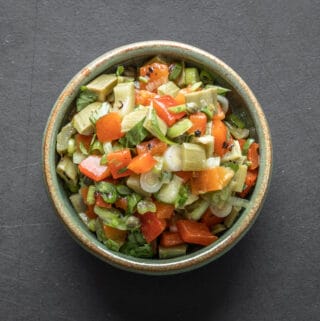Knotweed Recipes
About
Japanese knotweed is an edible wild plant popular in the foraging community and one of the most invasive plants I know. If you tried some and thought it tasted like swampy rhubarb you're not alone. It can be good in the right place though, and I can show you how.

Young, thick shoots under a foot tall are what you want here.
Favorites
Fermented Knotweed Pickles | Knotweed-Apple Leather | Knotweed Mousse | Knotweed Relish
General Cooking Tips
- The shoot of the plant is what you use, and ideally you'll get them under a foot tall, and the shoots will be thick.
- I avoid thin shoots as they can't be peeled, which helps calm their funky flavor.
Savory or Sweet
I've been foraging and cooking the shoots for years, and I've learned some tricks along the way. Savory dishes can work, as well as desserts if it's used correctly.

Green sorbet. I describe the taste as earthy, green rhubarb.
My favorite way to enjoy this plant is after it's been fermented. Fermenting the peeled shoots doesn't activate the slimy mucilage, and keeps them crisp and crunchy. The pickles are delicious mixed into a relish for fish.

Fermented pickles.
Caution
Prevent the spread
It's important not to compost peels, trim, or any other part of the plant as it can spread. When disposing of trim and peels and other parts of the plant, microwave them first before putting in the compost.
Avoid Sprayed Plants
I prefer to harvest knotweed plants from areas I know and trust. If I see knotweed in an urban area I always make sure to do my research and inspect to see if the plants have been sprayed with herbicide.
If the plants look wilted, browned or like they've been hit by a plague, find another patch and move on.







